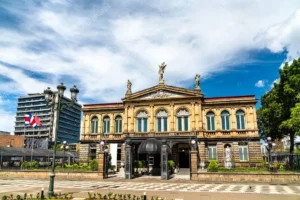
National Theatre of Costa Rica: A Cultural and Historical Gem of the Country
The National Theatre of Costa Rica: history, neoclassical architecture, and cultural programming that make it a heritage symbol of the nation.
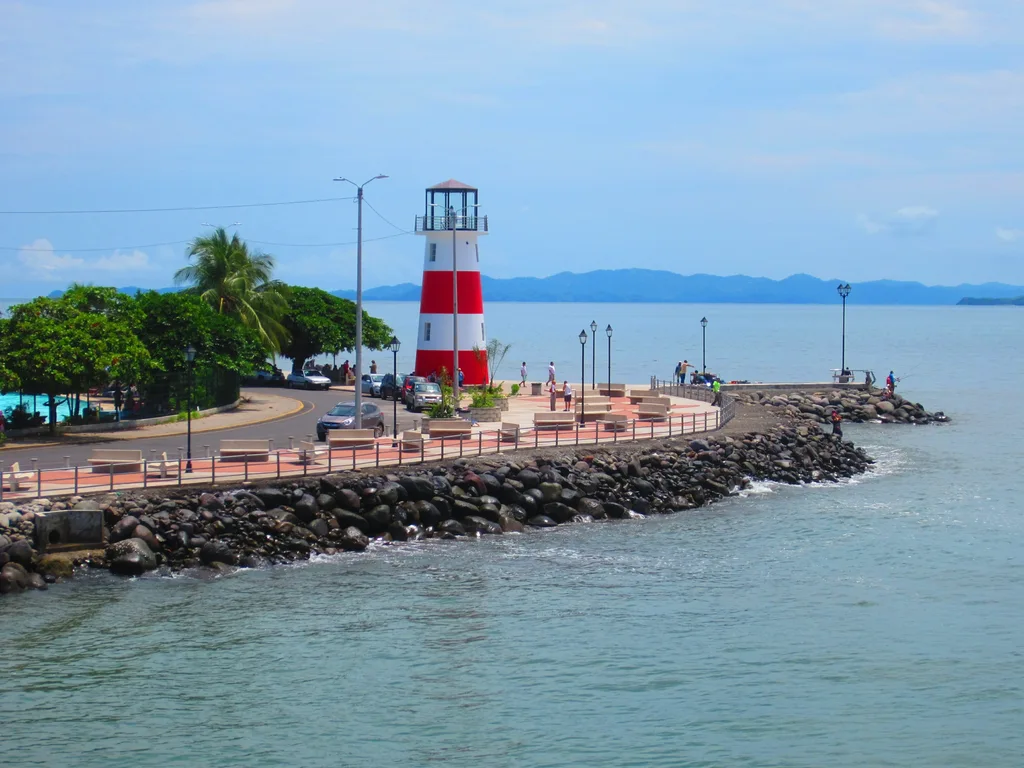
Portada » The Puntarenas Lighthouse: Guardian of History
At the edge of the city of Puntarenas, where the land bids farewell to the sea, stands an iconic figure that has been a silent witness to the unfolding of a nation. It is not just a concrete tower; it is a living symbol of the history, commerce, and identity of a province shaped by the sound of the waves.
Let’s imagine, for a moment, early 20th-century Costa Rica. The port of Puntarenas was the beating heart of national commerce. Ships loaded with coffee, our “golden bean,” arrived and departed, connecting a small country with the markets of the world.
| Year | Event | Significance |
|---|---|---|
| 1925 | Construction of first lighthouse | Born as a guide for commercial navigation |
| Mid 20th century | Port’s heyday | Center of Costa Rica’s economy |
| 1980s | Reconstruction | Preservation of historical heritage |
The Puntarenas Lighthouse played a key role in the economic machinery:
Its symbolic value is shown through:
| Feature | Detail |
|---|---|
| Location | At the tip of the city’s “point” |
| Reconstruction | 1980s, respecting original design |
| Current function | Historical symbol and tourist attraction |
| Date/Period | Relevant Event |
|---|---|
| 19th century | Puntarenas port consolidates as Costa Rica’s main trade hub, vital for coffee exportation. |
| 1925 | The first lighthouse is built at the tip of Puntarenas as part of a port modernization plan. Its main role is to guide ships at night. |
| Mid 20th century | The lighthouse continues to operate as an essential tool for navigation safety in the Gulf of Nicoya and the Pacific Ocean. |
| 1970s–80s | The original lighthouse suffers damage from time and weather. Modern navigation tech (GPS, radars) begins to reduce its traditional role. |
| 1980s | Reconstruction is decided. The new structure rises on the original site, preserving the iconic design to maintain its symbolic value. |
| Late 20th century–Present | The lighthouse ceases to be a crucial navigation tool but grows exponentially in cultural and tourist importance, becoming a city icon. |
| Present Day | The Puntarenas Lighthouse is a cultural landmark, tourist attraction, and emblematic place at the end of Paseo de los Turistas, where its light remains lit as a tribute to its history. |

The National Theatre of Costa Rica: history, neoclassical architecture, and cultural programming that make it a heritage symbol of the nation.
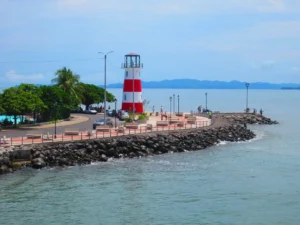
Puntarenas Lighthouse: history, economic impact, and its legacy as an iconic symbol of Costa Rica's Pacific coast.
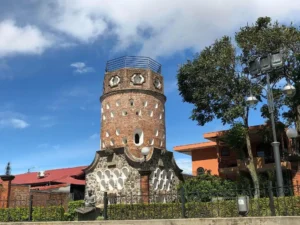
Fortín de Heredia, an emblematic Costa Rican fortification that symbolizes vigilance, defense, and community commitment.

How drummer Juan Santamaría became Costa Rica's hero by burning Walker's fortress in 1856. Explore his legacy today.

Does your mom have a special quote? Share it and win a prize at Ponderosa. Let's honor her love this Mother's Day! 💖
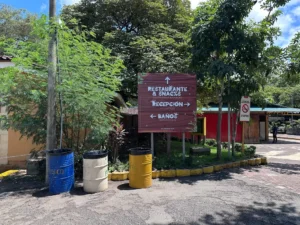
Ponderosa in Costa Rica strengthens its environmental commitment by collecting and delivering 170 kilos of recycling to the Municipality of Liberia.

The National Theatre of Costa Rica: history, neoclassical architecture, and cultural programming that make it a heritage symbol of the nation.

Puntarenas Lighthouse: history, economic impact, and its legacy as an iconic symbol of Costa Rica's Pacific coast.

Fortín de Heredia, an emblematic Costa Rican fortification that symbolizes vigilance, defense, and community commitment.

How drummer Juan Santamaría became Costa Rica's hero by burning Walker's fortress in 1856. Explore his legacy today.

⏱️40 Minutes | 💦Guaranteed Fun | 👪 Family Activity
Fluye con la corriente en el Lazy River Float de Ponderosa.

⏱️1 Hour | 🏇 Horseback Riding | 👪 Family
Conéctate con la naturaleza en la cabalgata de Ponderosa. Un recorrido a

⏱️1-2 Hour | 🚜 Guided Tour | 👪 Family Activity
Disfruta de una aventura inolvidable en el Safari Tour de
To provide the best experiences, we and our partners use technologies like cookies to store and/or access device information. Consenting to these technologies will allow us and our partners to process personal data such as browsing behavior or unique IDs on this site and show (non-) personalized ads. Not consenting or withdrawing consent, may adversely affect certain features and functions.
Click below to consent to the above or make granular choices. Your choices will be applied to this site only. You can change your settings at any time, including withdrawing your consent, by using the toggles on the Cookie Policy, or by clicking on the manage consent button at the bottom of the screen.
Utilizamos tecnologías como las cookies para almacenar y/o acceder a la información del dispositivo. Lo hacemos para mejorar la experiencia de navegación y para mostrar (no-) anuncios personalizados. El consentimiento a estas tecnologías nos permitirá procesar datos como el comportamiento de navegación o los ID's únicos en este sitio. No consentir o retirar el consentimiento, puede afectar negativamente a ciertas características y funciones.